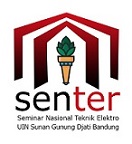Efisiensi Biaya Energi Listrik Reverse Osmosis System Menggunakan Metode Load Shifting Management
Keywords:
daily timer, load shifting management, reverse osmosis system, waktu beban puncakAbstract
Energi listrik merupakan energi primer yang sangat diperlukan oleh kalangan industri untuk menggerakkan mesin-mesin produksi dan mesin-mesin pendukung untuk kelancaran proses produksi. Salah satu mesin pendukung yang mengkonsumsi energi listrik adalah reverse osmosis system untuk menghasilkan air minum yang digunakan sebagai bahan baku produksi. Penggunaan energi listrik memiliki tarif yang berbeda pada setiap waktunya, dimana biaya diwaktu beban puncak memiliki tarif lebih mahal 45% dibandingkan dengan tarif diluar waktu beban puncak. Pada penelitian ini akan membahas efisiensi biaya energi listrik dengan menggunakan metode load shifting management, dimana metode tersebut dilakukan dengan pengaturan jam nyala mesin reverse osmosis system dengan menggunakan timer. Cara kerja yang dari daily timer tersebut adalah dengan cara memindahkan jam nyala yang seharusnya diwaktu beban puncak menjadi menyala diwaktu luar beban puncak. Dari hasil pengaturan jam nyala mesin reverse osmosis system dengan metode load shifting management menggunakan bantuan timer didapatkan hasil bahwa mesin menyala hanya diluar waktu beban puncak dan mengurangi biaya energi listrik yang dikonsumsi sebesar 32%.
Electrical energy is the primary energy that is needed by industry to drive production machines and supporting machines for the smooth production process. One of the supporting machines that consume electrical energy is a reverse osmosis system to produce drinking water which is used as raw material for production. The use of electrical energy has a different tariff at any time, where the cost at peak load is 45% more expensive than the tariff outside the peak load time. In this study, we will discuss the efficiency of electrical energy costs by using the load shifting management method, where the method is carried out by setting the reverse osmosis system engine ignition using a timer. The way the daily timer works is by moving the clock that should be at the peak load time to turn on at the time outside the peak load. From the results of setting the reverse osmosis system engine start time with the load shifting management method using the help of a timer, it is found that the engine is running only outside the peak load time and reduces the cost of electrical energy consumed by 32%.
Downloads
References
Edy Hilmawan, “Energy efficiency standard and labelling in Indonesia”. International Coorporation for Energy Efficiency Standard and Labelling Policy. Tokyo. Japan, 2009.
Vashishtha, S. and Ramachandran, M, “Multicriteria evaluation of Demand Side Management (DSM) Implementation strategies in the Indian power sector”. Energy 31 pp. 2210-2225, 2006.
Mulyono, “Implementasi Demand Side Management (DSM) pada Instalasi Pengolahan Air PDAM Mulia Baru”. Jurnal Ilmiah Energi dan Kelistrikan Vol. 12, No.1, Januari – Juni 2020, P-ISSN 1979-0783, E-ISSN 2655-5042, 2020.



